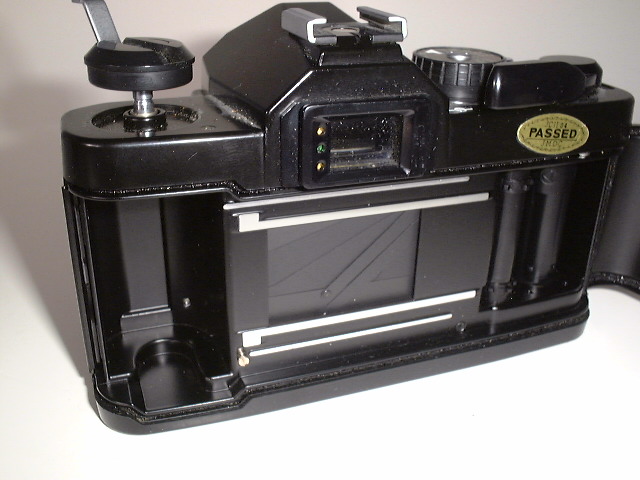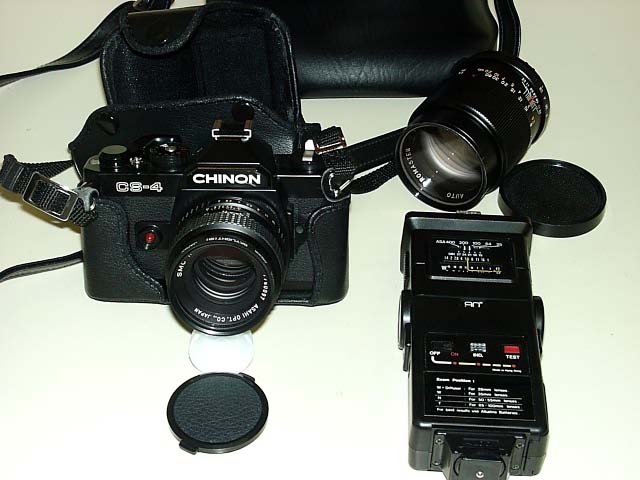Chinon CS-4
Back to main
Camera Manual page
A thread mount camera with an LED metering system.
First you must match the film's ASA with the camera's ASA knob on the shutter
speed knob, To do this lift the shutter speed knob and turn it to match
the film speed inside the little window. Turn on the meter by pressing the
lever by the lens, then just choose a shutter speed and then an aperture.
If the amber (top) light is on, then you are over exposed. Then just close
the aperture or choose a faster shutter speed until the green (middle) light
goes on. If the amber (bottom) light is lit, then open the aperture (more
light) or go to a slower shutter speed. Make sure the shutter speed is
above 1/60 to prevent camera shake. Some people can go to 1/30. If
you have a telephoto (135mm or more) lens be careful if the shutter speed goes
below 1/125. Change the aperture to a wider setting to give you more
shutter speed but remember, the wider aperture will give reduced depth of field.
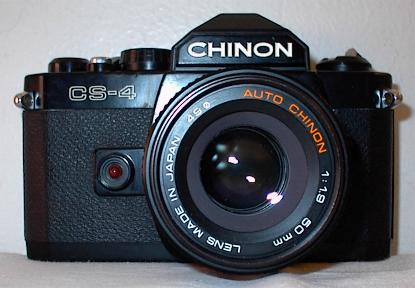
Here you see the B (bulb - time exposure) 1 second to 1/1000 second shutter
speeds. You can also see the little ASA window that shows the camera is
set to 200 ASA. This lens goes from F 1.8 to F16. The single contact
flash shoe means it will not automatically set the flash shutter speed.
Any flash unit would work.
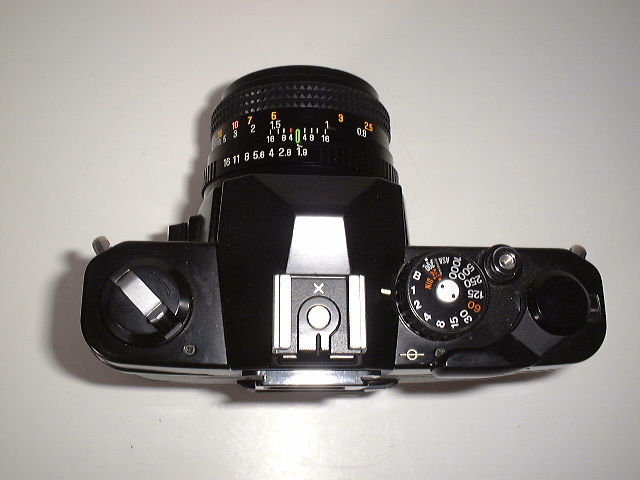
Here you see the LEDs. The little box is to hold the torn off label of
the film so you know what's inside.
Newer cameras have a little window by the film canister.
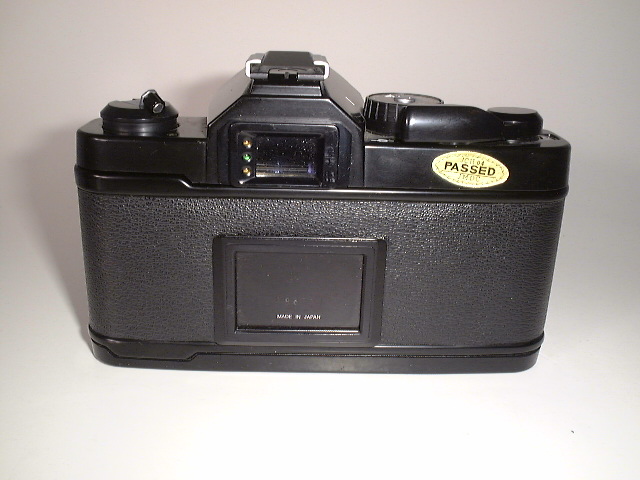
Note the metal vertical shutter like a Ricoh camera, yet your flash sync is
still just 1/60 sec.
This also shows you the thin black foam just on the outside edge of
the film opening. Older cameras may loose the foam flexibility and
actually become sticky. This can cause light leaks. Replacement foam is
available via camera repairs places or ordering it from outfits that sell this
specific material. The camera mirror foam also is a area where foam can
deteriorate.
|
